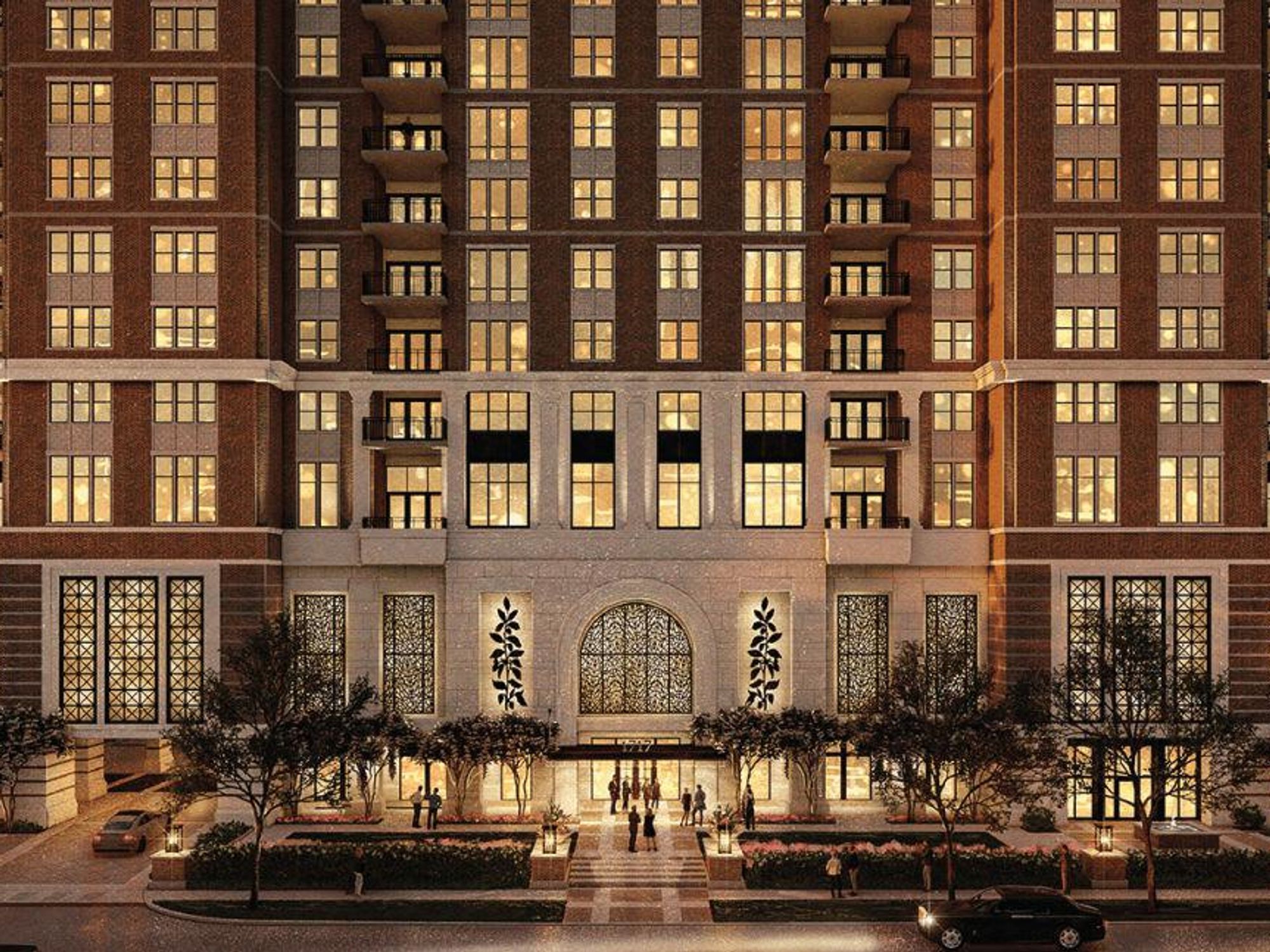the langley's a go
Controversial Inner Loop high-rise gets go-ahead; City Council member decries 'terrible news'

The Langley — which replaces The Ashby high-rise — is set to move forward.
A long-embattled residential high-rise project in Boulevard Oaks is set to move forward, with one Houston City Council member calling the news "terrible."
The Langley , a new luxury rental community jointly developed by El Paso-based Hunt Companies, Inc. and Dallas-based StreetLights Residential has just been given the green light to break ground by the City of Houston.
As neighbors are well aware, The Langley (1717 Bissonnet St.) is the new iteration of the hot-button mix-used development that was long dubbed the Ashby high-rise. A turf war between the Ashby's developers and Boulevard Oaks residents and representatives dates back some 15 years. (The occasional "Stop Ashby High-Rise" bumper sticker can still be spotted in the Inner Loop.)
Locals filed a suit against Buckhead Investment Partners, a judge eventually sided with developers in 2016.
The Langley, a more intimate version than the original high-rise, is meant to appease residents who opposed the large development's footprint and effect on traffic and flow. As the Houston Chronicle reported, the city of Houston approved StreetLights Residential's permit for site and foundation work in March.
Now, it appears the The Langley is cleared to break ground. No word yet if Hunt Companies and StreetLights Residential hope to complete the project by 2025, the original target date.
City Council Member Abbie Kamin minced no words on Thursday, April 20. "This is terrible news and I won’t sugarcoat it," she wrote in an email to constituents. "Residents and I have been fighting this grossly out-of-scale development – and its negative impacts on traffic, congestion, safety, and quality of life for neighbors – with both hands tied behind our backs."

Hunt Companies and StreetLights Residential are "taking advantage of Houston’s lack of zoning," Kamin continued. She added the developers are"using state vested rights laws to disregard new residential buffering standards, and other neighborhood protections that have been fought for and passed by City Council during my time and before."
Kamin, for her part, vows to fight for residents. "Let me be clear: I stand strongly opposed to this development and others that do not incorporate and include the measures we have put in place to make development better for neighborhoods," she wrote. "I will continue to advocate for and alongside our residents to mitigate the impacts this construction project is going to have on the neighborhood."
A little about this lighting-rod development. The Langley will offer 134 apartment homes in two- and three-bedroom floor plans, according to press materials. Aimed at luxe renters, downsizing empty-nesters, and single-family-home owners, the project promises “the valet and concierge services of a five-star hotel and the craftsmanship of a custom home,” per StreetLights.
Average rental unit spaces are just under 3,000 square feet and are targeted to long-term leases. The Langley’s approach will mirror StreetLight’s other Houston properties: The James and The Ivy, neighboring projects in Highland Village, and upmarket community The Carter.
“The Langley will be a high-rise residential building with stunning views that match the surrounding community's standard of excellence,” said Stephen Meek, senior vice president of development for StreetLights Residential, in a statement. “Nestled between Rice University and the Museum District, and drawing inspiration from the historic charm of the immediate Boulevard Oaks and Southampton neighborhoods, The Langley’s location demands the highest level of detail in building design, amenities, finishes, and services.”
In contract, the Ashby high-rise (first proposed in 2007), consisted of a 23-story tower with 17 floors of units. In effort to blend with the community, developers planned an aesthetic that matched that of nearby Rice University. However, the project drew widespread — and well-publicized — protests from area residents who objected to the potential influx of traffic it would create in the affluent, Inner Loop neighborhood.
At the center of a walkability/quality of life maelstrom, the Ashby space was either damaging to the neighborhood, traffic flow, and residents’ privacy, or, a boon to Inner Loop development — depending on the source.
Before long, the Ashby became a microcosm of the gumbo that makes up Houston's real estate zeitgeist. A swirling mix of no zoning, Wild West development, "not in my backyard" residents, and the city's rampant growth, the Ashby high-rise fight is now in the annals of Inner Loop real estate history.
Will neighbors take to this kinder, gentler development? Time will tell.
